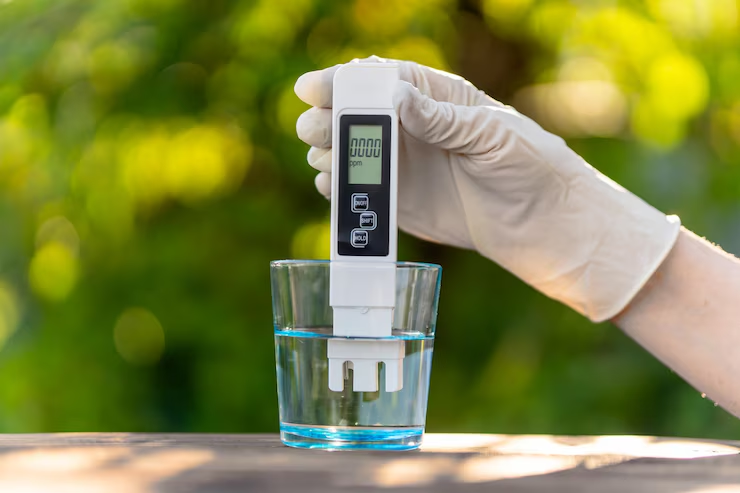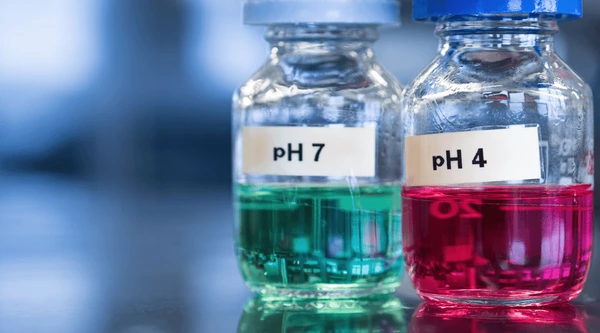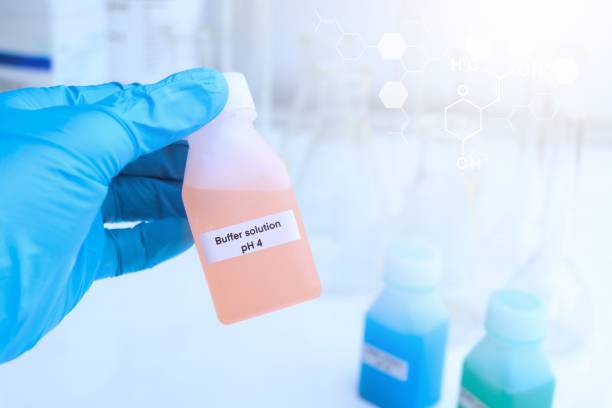Buffers are essential in various chemical, biological, and industrial processes where maintaining a stable pH is critical. Among these, the pH 4 buffer solution plays a vital role, particularly in acidic environments and analytical applications. This comprehensive guide delves into the composition, preparation, applications, and importance of a pH 4 buffer solution, offering detailed insights to help you master its use and significance.
Introduction to pH 4 Buffer Solution
A pH 4 buffer solution is a specially prepared mixture designed to maintain a consistent hydrogen ion concentration, keeping the pH steady around 4. This acidic buffer effectively resists changes in pH when small amounts of acid or base are introduced, making it essential for applications that demand accurate acidity regulation.
Buffers work based on the presence of a weak acid and its conjugate base. For a pH 4 buffer, this generally involves acids with pKa values close to 4, ensuring maximum buffering capacity at this pH range.
Chemical Composition of pH 4 Buffer Solutions
The most common chemical system used to prepare a pH 4 buffer is the Acetic acid (CH3COOH) and Sodium acetate (CH3COONa) pair. Acetic acid is a weak acid with a pKa of approximately 4.76, which makes it suitable for buffers near this pH.
Typical Components:
- Acetic acid (CH3COOH): Weak acid providing H⁺ ions.
- Sodium acetate (CH3COONa): Conjugate base supplying acetate ions (CH3COO⁻).
Other buffer systems that can be used for pH 4 include citric acid and its salts or phosphate buffers adjusted accordingly, but the acetic acid-sodium acetate buffer remains the most popular due to ease of preparation and reliability.
How to Prepare a pH 4 Buffer Solution

Materials Required:
- Acetic acid (glacial)
- Sodium acetate (anhydrous or trihydrate)
- Distilled water
- pH meter or pH indicator strips for calibration
- Volumetric flask and stirring rod
Step-by-Step Preparation:
- Calculate the desired molar concentrations of acetic acid and sodium acetate using the Henderson-Hasselbalch equation:
- pH = pKa + log([A−][HA])
- For pH 4 and pKa 4.76:
- 4=4.76+log([A−][HA]) ⟹ [A−][HA]=10−0.76≈0.17
- Weigh the required amount of sodium acetate and measure the volume of acetic acid accordingly.
- Dissolve sodium acetate in a portion of distilled water.
- Add acetic acid slowly while stirring to the sodium acetate solution.
- Make up the volume to the desired final volume with distilled water.
- Check the pH with a calibrated pH meter. Adjust if necessary by adding small amounts of acetic acid or sodium acetate.
Why is pH 4 Buffer Solution Important?
1. Analytical Chemistry
A pH 4 buffer is widely used to calibrate pH meters and other analytical instruments, ensuring accurate and reliable pH measurements. Since pH meters must be calibrated at points close to the sample’s expected pH, pH 4 solutions are crucial when working with acidic samples.
2. Biochemical and Pharmaceutical Applications

Certain enzymes and biochemical reactions are highly sensitive to pH and require an acidic environment for optimal activity. A pH 4 buffer ensures that the system remains in the correct pH range, stabilizing the enzyme function and drug formulations.
3. Food Industry
Many food products, such as fruit juices, vinegar, and fermented food, require monitoring and controlling acidity. pH 4 buffer solutions are used in quality control processes to simulate or stabilize these acidic environments.
4. Environmental Testing
Water and soil testing for acidity often employs pH 4 buffers for equipment calibration and sample preparation to monitor environmental health.
Key Properties and Characteristics of pH 4 Buffer
- Effective buffering range: Typically between pH 3.76 to 5.76 (pKa ±1), with optimal stability near pH 4.
- Resistance to pH changes: Maintains stable pH despite minor acid or base additions.
- Non-toxic components: Acetic acid and sodium acetate are generally safe to handle with proper precautions.
- Shelf life: When kept in airtight containers under proper storage conditions, pH 4 buffers can remain stable for long durations.
Common Challenges and Solutions When Using pH 4 Buffers
1. pH Drift Over Time
Buffer solutions can experience slight changes in pH due to absorption of CO₂ from the air or microbial growth. Using airtight containers and sterile preparation techniques minimizes this issue.
2. Temperature Dependence
pH values can shift with temperature fluctuations. It is critical to calibrate instruments and use buffers at the same temperature as the sample to avoid inaccuracies.
3. Impurities Impacting pH
Impurities in reagents or water can alter buffer performance. Always use high-purity chemicals and distilled or deionized water for preparation.
Applications Beyond Routine pH Calibration
Industrial Processes
Many manufacturing processes involving dyes, textiles, and chemicals require a consistent acidic pH environment for reactions and stability. pH 4 buffers provide the necessary control to optimize these processes.
Research and Development

Scientists often utilize pH 4 buffers in experiments involving protein folding, enzyme kinetics, and chemical synthesis, where acid stability is crucial.
Storage and Handling Guidelines
- Store the buffer solution in a clean, airtight container away from direct sunlight.
- Avoid contamination by using clean instruments and closing containers immediately after use.
- Annotate the container with the preparation date and its composition.
- Dispose of old or contaminated buffers following appropriate safety regulations.
Conclusion
A pH 4 buffer solution is a fundamental tool in science and industry for maintaining acidic conditions with high precision. Its ease of preparation, reliability, and wide-ranging applications make it indispensable for laboratory calibration, biochemical assays, food testing, and industrial processes. Understanding its preparation, chemical basis, and proper handling ensures optimal performance and longevity.
For anyone dealing with acidic environments or precise pH control, mastering the pH 4 buffer solution is essential.
What is a pH 4 Buffer Solution?
Buffers are essential in various chemical, biological, and industrial processes where maintaining a stable pH is critical. Among these, the pH 4 buffer solution plays a vital role, particularly in acidic environments and analytical applications. This comprehensive guide delves into the composition, preparation, applications, and importance of a pH 4 buffer solution, offering detailed insights to help you master its use and significance.
A pH 4 buffer solution is a specially prepared mixture designed to maintain a consistent hydrogen ion concentration, keeping the pH steady around 4. This acidic buffer effectively resists changes in pH when small amounts of acid or base are introduced, making it essential for applications that demand accurate acidity regulation.
Buffers work based on the presence of a weak acid and its conjugate base. For a pH 4 buffer, this generally involves acids with pKa values close to 4, ensuring maximum buffering capacity at this pH range.
Chemical Composition of pH 4 Buffer Solutions
The most common chemical system used to prepare a pH 4 buffer is the Acetic acid (CH3COOH) and Sodium acetate (CH3COONa) pair. Acetic acid is a weak acid with a pKa of approximately 4.76, which makes it suitable for buffers near this pH.
Typical Components:
Acetic acid (CH3COOH): Weak acid providing H⁺ ions.
Sodium acetate (CH3COONa): Conjugate base supplying acetate ions (CH3COO⁻).
Other buffer systems that can be used for pH 4 include citric acid and its salts or phosphate buffers adjusted accordingly, but the acetic acid-sodium acetate buffer remains the most popular due to ease of preparation and reliability.
How to Prepare a pH 4 Buffer Solution
Materials Required:
Acetic acid (glacial)
Sodium acetate (anhydrous or trihydrate)
Distilled water
pH meter or pH indicator strips for calibration
Volumetric flask and stirring rod
Step-by-Step Preparation:
Calculate the desired molar concentrations of acetic acid and sodium acetate using the Henderson-Hasselbalch equation:
pH = pKa + log([A−][HA])
For pH 4 and pKa 4.76:
4=4.76+log([A−][HA]) ⟹ [A−][HA]=10−0.76≈0.17
Weigh the required amount of sodium acetate and measure the volume of acetic acid accordingly.
Dissolve sodium acetate in a portion of distilled water.
Add acetic acid slowly while stirring to the sodium acetate solution.
Make up the volume to the desired final volume with distilled water.
Check the pH with a calibrated pH meter. Adjust if necessary by adding small amounts of acetic acid or sodium acetate.
Why is pH 4 Buffer Solution Important?
1. Analytical Chemistry
A pH 4 buffer is widely used to calibrate pH meters and other analytical instruments, ensuring accurate and reliable pH measurements. Since pH meters must be calibrated at points close to the sample’s expected pH, pH 4 solutions are crucial when working with acidic samples.
2. Biochemical and Pharmaceutical Applications
Certain enzymes and biochemical reactions are highly sensitive to pH and require an acidic environment for optimal activity. A pH 4 buffer ensures that the system remains in the correct pH range, stabilizing the enzyme function and drug formulations.
3. Food Industry
Many food products, such as fruit juices, vinegar, and fermented food, require monitoring and controlling acidity. pH 4 buffer solutions are used in quality control processes to simulate or stabilize these acidic environments.
4. Environmental Testing
Water and soil testing for acidity often employs pH 4 buffers for equipment calibration and sample preparation to monitor environmental health.
Key Properties and Characteristics of pH 4 Buffer
Effective buffering range: Typically between pH 3.76 to 5.76 (pKa ±1), with optimal stability near pH 4.
Resistance to pH changes: Maintains stable pH despite minor acid or base additions.
Non-toxic components: Acetic acid and sodium acetate are generally safe to handle with proper precautions.
Shelf life: When kept in airtight containers under proper storage conditions, pH 4 buffers can remain stable for long durations.
Common Challenges and Solutions When Using pH 4 Buffers
1. pH Drift Over Time
Buffer solutions can experience slight changes in pH due to absorption of CO₂ from the air or microbial growth. Using airtight containers and sterile preparation techniques minimizes this issue.
2. Temperature Dependence
pH values can shift with temperature fluctuations. It is critical to calibrate instruments and use buffers at the same temperature as the sample to avoid inaccuracies.
3. Impurities Impacting pH
Impurities in reagents or water can alter buffer performance. Always use high-purity chemicals and distilled or deionized water for preparation.
Applications Beyond Routine pH Calibration
Industrial Processes
Many manufacturing processes involving dyes, textiles, and chemicals require a consistent acidic pH environment for reactions and stability. pH 4 buffers provide the necessary control to optimize these processes.
Research and Development
Scientists often utilize pH 4 buffers in experiments involving protein folding, enzyme kinetics, and chemical synthesis, where acid stability is crucial.
Storage and Handling Guidelines
Store the buffer solution in a clean, airtight container away from direct sunlight.
Avoid contamination by using clean instruments and closing containers immediately after use.
Annotate the container with the preparation date and its composition.
Dispose of old or contaminated buffers following appropriate safety regulations.
Conclusion
A pH 4 buffer solution is a fundamental tool in science and industry for maintaining acidic conditions with high precision. Its ease of preparation, reliability, and wide-ranging applications make it indispensable for laboratory calibration, biochemical assays, food testing, and industrial processes. Understanding its preparation, chemical basis, and proper handling ensures optimal performance and longevity.
For anyone dealing with acidic environments or precise pH control, mastering the pH 4 buffer solution is essential.
How to prepare pH 4 Buffer Solution.
Buffers are essential in various chemical, biological, and industrial processes where maintaining a stable pH is critical. Among these, the pH 4 buffer solution plays a vital role, particularly in acidic environments and analytical applications. This comprehensive guide delves into the composition, preparation, applications, and importance of a pH 4 buffer solution, offering detailed insights to help you master its use and significance.
A pH 4 buffer solution is a specially prepared mixture designed to maintain a consistent hydrogen ion concentration, keeping the pH steady around 4. This acidic buffer effectively resists changes in pH when small amounts of acid or base are introduced, making it essential for applications that demand accurate acidity regulation.
Buffers work based on the presence of a weak acid and its conjugate base. For a pH 4 buffer, this generally involves acids with pKa values close to 4, ensuring maximum buffering capacity at this pH range.
Chemical Composition of pH 4 Buffer Solutions
The most common chemical system used to prepare a pH 4 buffer is the Acetic acid (CH3COOH) and Sodium acetate (CH3COONa) pair. Acetic acid is a weak acid with a pKa of approximately 4.76, which makes it suitable for buffers near this pH.
Typical Components:
Acetic acid (CH3COOH): Weak acid providing H⁺ ions.
Sodium acetate (CH3COONa): Conjugate base supplying acetate ions (CH3COO⁻).
Other buffer systems that can be used for pH 4 include citric acid and its salts or phosphate buffers adjusted accordingly, but the acetic acid-sodium acetate buffer remains the most popular due to ease of preparation and reliability.
How to Prepare a pH 4 Buffer Solution
Materials Required:
Acetic acid (glacial)
Sodium acetate (anhydrous or trihydrate)
Distilled water
pH meter or pH indicator strips for calibration
Volumetric flask and stirring rod
Step-by-Step Preparation:
Calculate the desired molar concentrations of acetic acid and sodium acetate using the Henderson-Hasselbalch equation:
pH = pKa + log([A−][HA])
For pH 4 and pKa 4.76:
4=4.76+log([A−][HA]) ⟹ [A−][HA]=10−0.76≈0.17
Weigh the required amount of sodium acetate and measure the volume of acetic acid accordingly.
Dissolve sodium acetate in a portion of distilled water.
Add acetic acid slowly while stirring to the sodium acetate solution.
Make up the volume to the desired final volume with distilled water.
Check the pH with a calibrated pH meter. Adjust if necessary by adding small amounts of acetic acid or sodium acetate.
Why is pH 4 Buffer Solution Important?
1. Analytical Chemistry
A pH 4 buffer is widely used to calibrate pH meters and other analytical instruments, ensuring accurate and reliable pH measurements. Since pH meters must be calibrated at points close to the sample’s expected pH, pH 4 solutions are crucial when working with acidic samples.
2. Biochemical and Pharmaceutical Applications
Certain enzymes and biochemical reactions are highly sensitive to pH and require an acidic environment for optimal activity. A pH 4 buffer ensures that the system remains in the correct pH range, stabilizing the enzyme function and drug formulations.
3. Food Industry
Many food products, such as fruit juices, vinegar, and fermented food, require monitoring and controlling acidity. pH 4 buffer solutions are used in quality control processes to simulate or stabilize these acidic environments.
4. Environmental Testing
Water and soil testing for acidity often employs pH 4 buffers for equipment calibration and sample preparation to monitor environmental health.
Key Properties and Characteristics of pH 4 Buffer
Effective buffering range: Typically between pH 3.76 to 5.76 (pKa ±1), with optimal stability near pH 4.
Resistance to pH changes: Maintains stable pH despite minor acid or base additions.
Non-toxic components: Acetic acid and sodium acetate are generally safe to handle with proper precautions.
Shelf life: When kept in airtight containers under proper storage conditions, pH 4 buffers can remain stable for long durations.
Common Challenges and Solutions When Using pH 4 Buffers
1. pH Drift Over Time
Buffer solutions can experience slight changes in pH due to absorption of CO₂ from the air or microbial growth. Using airtight containers and sterile preparation techniques minimizes this issue.
2. Temperature Dependence
pH values can shift with temperature fluctuations. It is critical to calibrate instruments and use buffers at the same temperature as the sample to avoid inaccuracies.
3. Impurities Impacting pH
Impurities in reagents or water can alter buffer performance. Always use high-purity chemicals and distilled or deionized water for preparation.
Applications Beyond Routine pH Calibration
Industrial Processes
Many manufacturing processes involving dyes, textiles, and chemicals require a consistent acidic pH environment for reactions and stability. pH 4 buffers provide the necessary control to optimize these processes.
Research and Development
Scientists often utilize pH 4 buffers in experiments involving protein folding, enzyme kinetics, and chemical synthesis, where acid stability is crucial.
Storage and Handling Guidelines
Store the buffer solution in a clean, airtight container away from direct sunlight.
Avoid contamination by using clean instruments and closing containers immediately after use.
Annotate the container with the preparation date and its composition.
Dispose of old or contaminated buffers following appropriate safety regulations.
Conclusion
A pH 4 buffer solution is a fundamental tool in science and industry for maintaining acidic conditions with high precision. Its ease of preparation, reliability, and wide-ranging applications make it indispensable for laboratory calibration, biochemical assays, food testing, and industrial processes. Understanding its preparation, chemical basis, and proper handling ensures optimal performance and longevity.
For anyone dealing with acidic environments or precise pH control, mastering the pH 4 buffer solution is essential.
What are the chemical compositions of pH 4 Buffer Solutions?
The most common chemical system used to prepare a pH 4 buffer is the Acetic acid (CH3COOH) and Sodium acetate (CH3COONa) pair. Acetic acid is a weak acid with a pKa of approximately 4.76, which makes it suitable for buffers near this pH.
Typical Components:
Acetic acid (CH3COOH): Weak acid providing H⁺ ions.
Sodium acetate (CH3COONa): Conjugate base supplying acetate ions (CH3COO⁻).
Other buffer systems that can be used for pH 4 include citric acid and its salts or phosphate buffers adjusted accordingly, but the acetic acid-sodium acetate buffer remains the most popular due to ease of preparation and reliability.

1 thought on “pH 4 Buffer Solution”